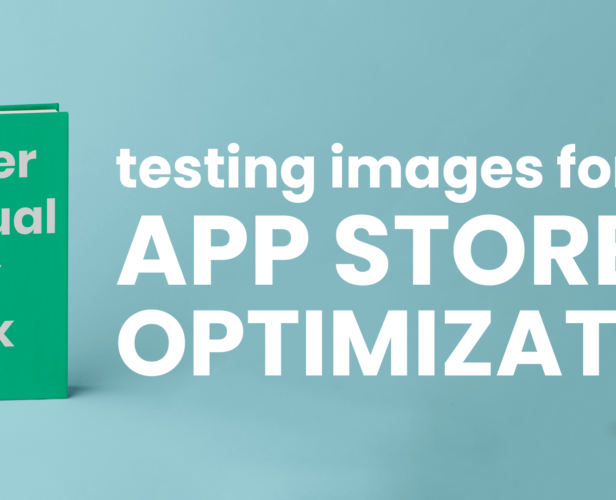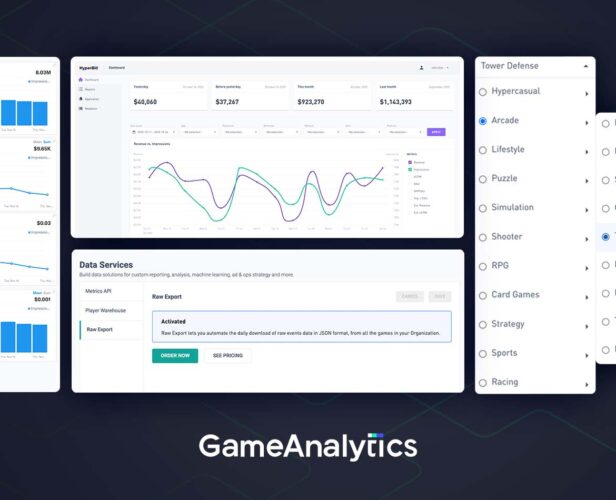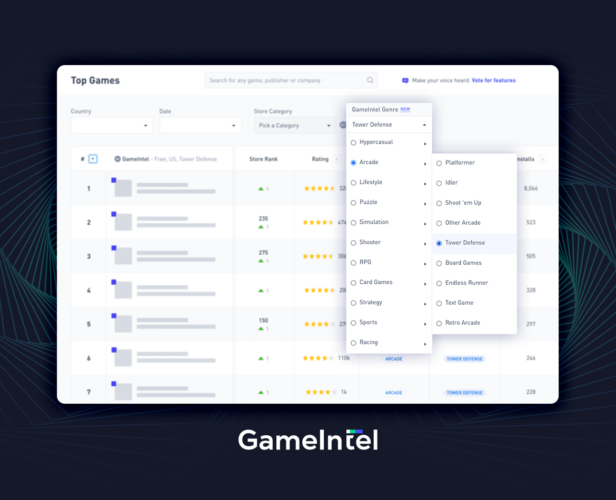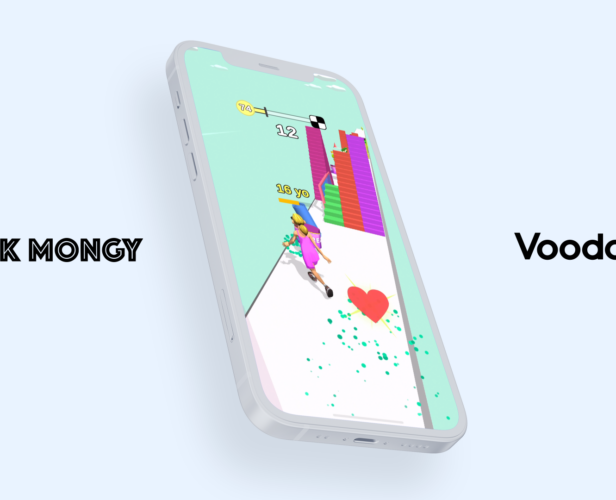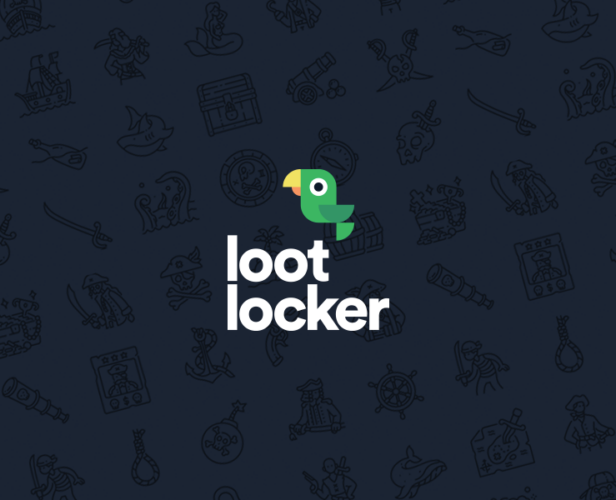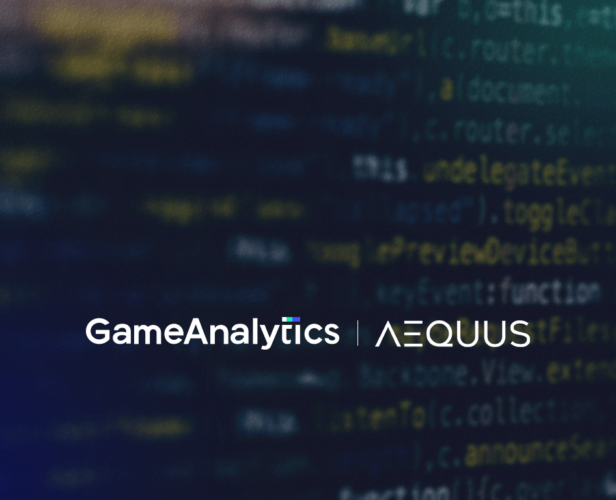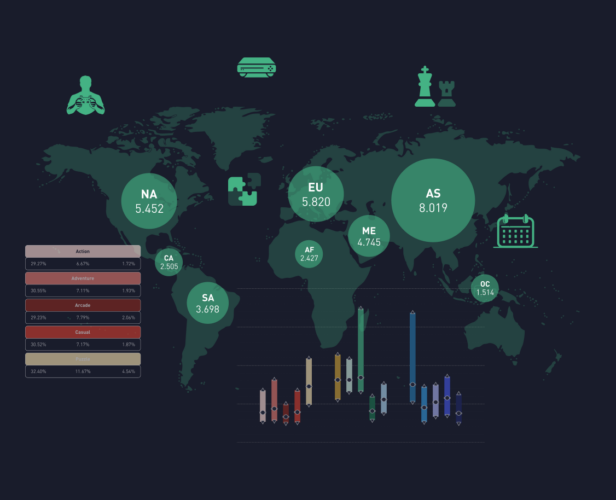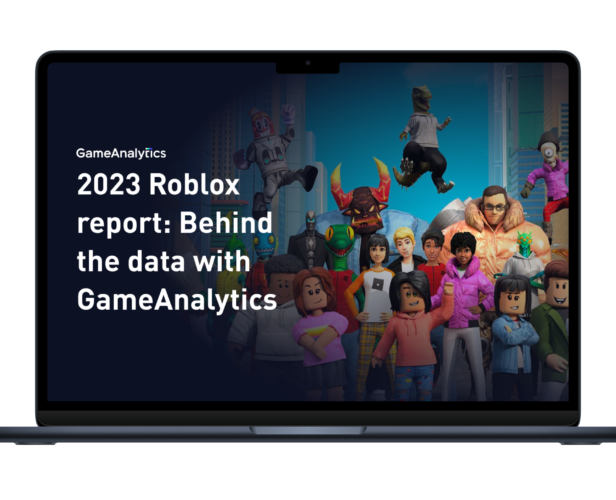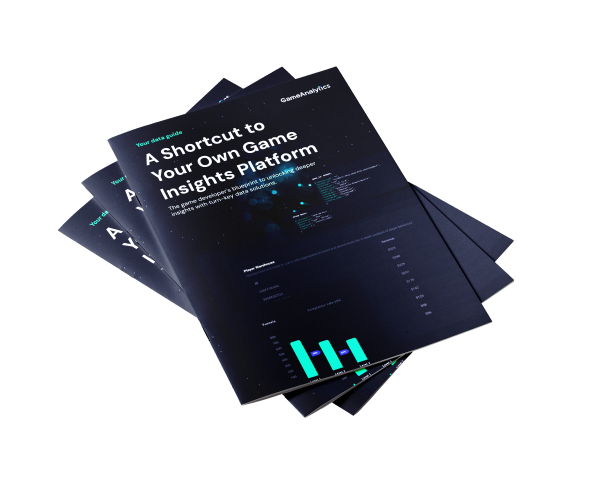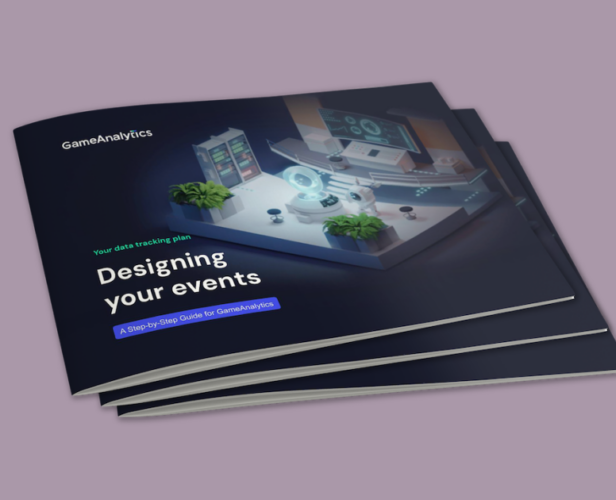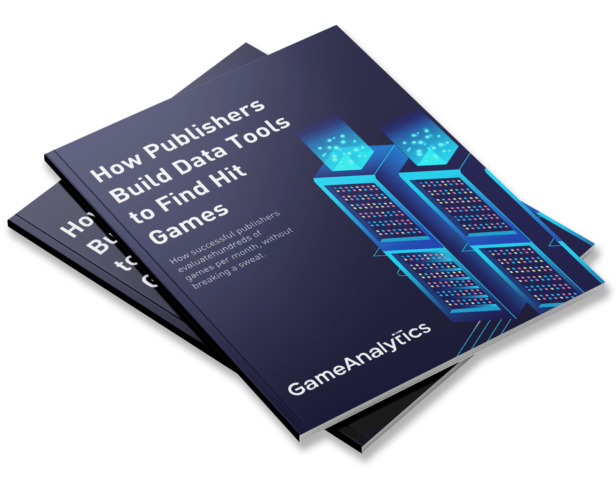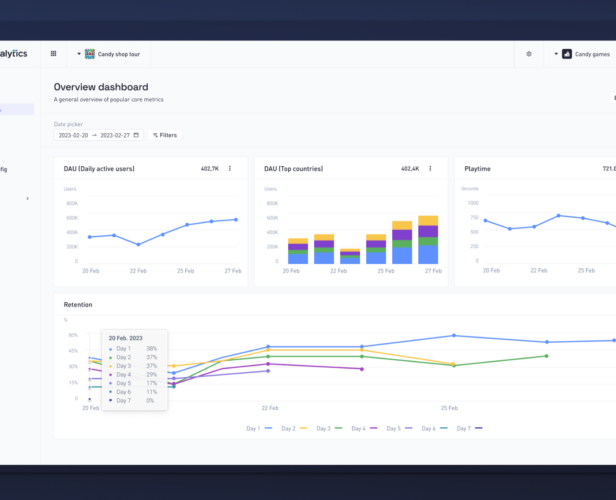Resources > All
Insights and tips about the games industry
Subscribe for gaming insights, industry reports and product updates delivered straight to your inbox.
#ASO
Homa Games’ Guide to App Store Optimization
Editor’s note: This article (and report) was written by the clever clogs at Home Games. You can read their original here. Game’s go through a lot of stages from ideation to executing and testing during the publishing cycle. But having a game published and up and running in the app stores is only the first step in making it accessible to the widest audience possible. For game creators, the app stores are the main point of contact with users, and they are the place where users will decide if a game is worth downloading or not. So, in order to put everything in your favor, you will need to make sure your game is presented in the best possible way, with its main features displayed and with images and wording fully optimized. That’s where app store optimization (ASO) comes into play. Every...
#Tool & Product
AdMob Integration, Raw Export and GameIntel Update
We’re coming to the end of the year, and what a year it has been. We’ll have a roundup blog coming out soon, but there’s still plenty to do and fill you in on before we start chatting about 2022. Recently, we’ve had a few major updates across all of our product lines. Here are the highlights: You can now analyze ad revenue from AdMob in your GameAnalytics account. We also added a new DataSuite to our product family, Raw Export. Ranking data for over 80 sub-genres is now available in GameIntel. So without wasting any more time with the intro’s, let’s dig into the main course. What’s new in GameAnalytics? We’ve created an integration with AdMob We partnered with Google’s AdMob to bring you Impression level revenue data (ILRD) from their network directly to your GameAnalytics tool. All to...
#Tool & Product
Ranking Data for Over 80 Sub-Genres Now Available in GameIntel
Line yourself up, recruit. You can now track ranking games across more types of charts than ever before; made up of an entire new division of 80+ sub-genres. Including everything from ‘Snipers’, ‘Tower Defense’ through to ‘Romance Games’. We have three main changes for you to get through today. In GameIntel, you can now: Filter the charts by over 80 sub-genres. Sort the ranks by specific metrics, like highest retention or longest playtime. Unlock this with our new Starter tier (only $99 a month). There’s a lot to explain here. So gear up and let’s get started. What’s new in GameIntel 1. Filter the charts by over 80 sub-genres In addition to the standard App Store categories (such as hyper-casual, RPG, and Sports), you can now explore aggregated GameIntel charts for more than 80 additional sub-genres (like Tower Defense, Snipers,...
#ASO
“Squid Game” Mobile Games: Who Made It Into The Charts?
Squid Game games turns Mobile Netflix released the new show, Squid Game, on September 17th 2021. Over 132 million people watched the show in the first 23 days of its release, with 4.4 million new people subscribing to the platform (presumably to see the series). It’s easily a new record for Netflix, overtaking Bridgertons number 1 spot. Netflix have even announced that they’re going to make their own “Squid Game” game, as an attempt to increase its popularity in regions like North America. Netflix aren’t the only ones reaping the benefits of this Korean Battle Royale style show. We’re being flooded with memes, halloween costumes, and merch around the hit, all across the globe. But more importantly, mobile games. We’ve seen hundreds of hyper-casual games enter the app stores, all inspired by the Squid Game theme. With the topic still...
#Marketing & Publishing
5 Reasons Game Devs Should Start Making Hyper-casual Games
Editor’s note: This article was originally crafted by TapNation. If you fancy reading the original, you can find it here. It’s no secret that creating a game can be pricey. Hiring a strong development team is just the start of your journey. Aside from the months (even years) of developing a game, when you start focusing on your marketing and ongoing user acquisition campaigns, the expenses and costs can pile on (before you’ve had a chance to make any revenue). Making it near impossible for smaller dev teams to enter the market. Hyper-casual is changing that. These games are turning into a developer’s stepping stone into kick-starting their career in the gaming industry. Without the need for large initial investments. And to get a better idea of how the hyper-casual genre can help game makers enter the professional world of...
#Tool & Product
Introducing Raw Export – A New DataSuite from GameAnalytics
Update: DataSuite features are now available in a single, affordable, bundle. Find out how to save on your data processing costs for games here. We’re all about the analytics (there’s a clue in our name), and using them to help you grow your games. And we’re always looking for ways to make data work even harder for you. So we’ve added a new service to our already-impressive roster – Raw Export. Here’s how it can help you turn your data into action. Dive even deeper With Raw Export you can automatically export all your games’ raw event data in JSON format, without any manual intervention. So every day it’ll ingest, preprocess, and deliver player data from your GameAnalytics account straight into your AWS S3 account. It even packages it into a neat and tidy compressed file containing unchanged raw events...
#Game Design
Run of Life: Ideation Tips for Creating Viral Games
Editor’s note: This article was originally written by the brilliant minds at Voodoo. They’ve agreed to share the story with us here, but head over to their blog if you want to see the original. Run of Life is the brand new hit game developed by Tarek Mongy, a solo-dev based in Cairo. Transforming the popular stacking trend into a super relatable concept, the team hit over 20 million views on TikTok, generating a huge number of organic installs even before the game was officially launched. We sat down with Tarek and Jill, Publishing Manager at Voodoo, to take a closer look at the game as well as their tips on how to come up with viral and mass-market ideas for your next prototype. Ideation Fundamentals Your ideation process is key to creating hot prototypes. The more you prototype, the more...
#Ads & Monetization
How to Monetize Your Game With a Backend – Part 2
A few weeks ago, we went over what backends are, what you can do with them, and what kinds of monetization strategies are possible when using a backend-as-a-service. This time, we want to take this topic a step further. Now, we’ll chat about everything else your backend can do, and how to get your monetization right. Let’s dive back in. Quick recap from our last blog You can check it out if you missed our last article (or just want to brush up on your reading). But here’s the TL;DR breakdown: Your backend can handle all kinds of monetization types, including: Hard and soft currencies. Cosmetics. Loot boxes. Upgrades. Season passes and battle passes. Subscriptions. Opt-in events. DLC. And your backend matters here. They provide the ecosystem that lets your monetization both function and thrive. We’ve gone into a lot...
#Marketing & Publishing
Arcade Idle HomaJam: A Winning Theme
Editor’s note: This article was written by our friends at Homa Games. We recently ran a game jam with them. And we’re thrilled to announce the winners and results below. Another game jam edition comes to an end as we announce the winners of our Arcade Idle HomaJam, and we have many! With the best quality submissions we have seen so far, this jam’s games reached outstanding metrics and presented the most promising ideas under the theme of Arcade Idle. Arcade Idle is a new subgenre that combines idle and adventure arcade’s main attributes with a chilled Hypercasual look and feel. Removing all complexity from resource mining games, but preserving its core ability to engage, this clever mix translates into hybrid games with medium/low CPI, but much stronger playtime metrics that can reach 30+ minutes. With games like Harvest It, Craft Island, and Farm Land,...
#Data & Analytics
iOS 14 Opt-in-Rate Is Higher for Mobile Games
Earlier this year, Apple released iOS 14.5. It was the dreaded update among all app developers, studios, and publishers. If you wanted to access a user’s mobile identifier (IDFA), you had to ask for their consent specifically. If you’re unsure why this is important, the IDFA is used for advertising purposes. When Apple released the update, almost every user needed to opt-in (rather than out), hugely impacting advertising and ad revenue. (More about this here.) But we’ve seen some interesting findings about mobile game opt-in rate. Which is what we’re going to cover in this blog. We have data on Opt-in Rates We’ve read tons of articles and blogs within the industry over the past few months. All speculating what they think the Consent Opt-in Rate would be – especially for games. And for us, we don’t need to guess...
#Ads & Monetization
How to Monetize Your Game With a Backend – Part 1
Monetizing your games in the most suitable way possible can bring a game studio many gains. It lets you grow your business, build out IP into a series, elevate your team’s potential, and keep you making more games. Today’s studios are somewhat spoiled for choice when it comes to how they make money. Whether you’re using in-app purchases, subscriptions, DLC or something else entirely, there are many options. Picking the right one for your game and audience is key here. What you might not expect, however, is how important your backend is to your monetization strategy. Here at LootLocker, building backends that empower developers is at the core of our business. That’s given us a wealth of understanding around the relationship between backends and monetization — some lessons we can’t wait to fill you in on. We have a lot...
#Tool & Product
Ad Revenue From Aequus Now in GameAnalytics
Our collection of Ad Revenue providers is growing. A couple weeks back, we were shouting about Applovin MAX being added into the mix of things. And this time, we’re thrilled to let you know that we’ve just partnered up with Aequus. Meaning you can now analyze your ad revenue from Aequus in your GameAnalytics account. Again, this is another great addition to our analytics platform. Here’s the docs to get you started. And if you want to learn exactly what this means for you, then read on. Let’s get to it. What’s new in GameAnalytics? We added support for impression-level ad revenue data from Aequus (like we did earlier for MAX, MoPub, Fyber, etc) This means you can now: query and filter data for ad revenue metrics from Aequus in the Explore Tool optimize ad revenue from Aequus using A/B...
#Case study
How Wargaming uses GameIntel to focus on successful game ideas
They could focus their efforts When testing out concepts, it’s difficult to know which ideas will be successful and which will be a waste of effort. In the past, Wargaming’s data didn’t give them quite what they needed and wasn’t particularly scalable. It also didn’t feel fair to their studios. With GameIntel, specifically metric data from Benchmarks+, they could create realistic targets for studios to reach and base their decisions off the data. They now know what KPIs are considered good, great, and downright poor in the industry for each key sub-genre, rather than just guessing. “Success isn’t always about releasing a game. It’s sometimes about shutting a game down soon enough so that you don’t waste time and money,” said Alex Nenadavets, their manager of competitive intelligence. “We’ve definitely saved time by not wasting it on ideas that wouldn’t...
#Editor's pick
Game data pipeline: Building vs buying
As a large number of studios, publishers, and game developers are heavily relying on data to guide their decisions, they need to decide between building or buying. But which one is more efficient? To assist you in understanding the Total Cost of Ownership (TCO), we broke down the following key considerations: Setup requirements Cost calculation Team needs and recruitment
#Editor's pick
Mobile gaming benchmarks for Q1 2024
Uncover the industry’s performance with Q1 2024 benchmarks. Explore key metrics like retention rates and session engagement to benchmark your games against industry standards. What’s inside? Retention benchmarks for casual, classic, and mid-core games Session length benchmarks for games launched in North America, Europe, the Middle East, and Asia Session count benchmarks across 15 game genres
#Editor's pick
Grow your revenue with Xsolla Web Shop for Mobile Games
“Xsolla anticipated this seismic shift earlier this year, when we launched multiple products that are being actively used by some of the world’s largest game companies to increase profit and build closer relationships with their mobile and pc players. We’ve now combined these products and learnings into an elegant new solution called Xsolla Web Shop for Mobile Games,” said Chris Hewish, President of Xsolla. Through Xsolla Web Shop for Mobile Games, developers can expect significant revenue growth and can reach new players in new geographies previously unavailable to them. This solution solves many challenges developers face; such as discoverability, declining profit margins, lack of control over the user experience, access to localized payment methods, cross game marketing, more efficient user acquisition, effective collaboration with creators and influencers, and much more. Three industry-changing announcements make this opportunity more timely than ever:...
#Editor's pick
2023 Roblox report: Behind the data with GameAnalytics
Download a comprehensive report of Roblox player behavior and game performance based on GameAnalytics data from 2023. This report highlights critical benchmarks and insights to help Roblox creators optimize their games. What’s inside? Devices analysis Players’ daily session frequency Average revenue spent per user Session length and count benchmarks Retention benchmarks Revenue benchmarks
#Editor's pick
The Game Developer’s Handbook to Mastering Data Solutions
Data is the key to success in the ever-evolving landscape of game development. Explore this guide to transform your data into insights using our turn-key data solutions. What’s inside? Our comprehensive guide explores cost-saving strategies and real-world applications for advanced use cases. Learn how to seamlessly integrate data sources, unlock detailed player insights with Player Warehouse, access real-time data with Raw Export, and ensure data privacy compliance.
#Case study
Developing a #1 VR MMO: Ramen VR’s Journey with GameAnalytics
Discover how Ramen VR used data-driven game development to launch "Zenith: The Last City", which became the #1 bestselling game all major VR platforms—including Meta Quest/Rift, Steam and PlayStation VR.
#Editor's pick
Using AI to Supercharge Your Game Art Design
Discover how tweaking AI tool settings can help you generate varied art styles, produce better concepts, and speed up the process from prototype to final design. With AI on your team, creating unique game art has never been easier or faster.
#Editor's pick
Event Design & Tracking Guide for GameAnalytics
Learn how to create an adaptable tracking plan, enabling you to unlock richer insights and maximize the value of your data within GameAnalytics.
#Editor's pick
How studios use DataSuite to find hit games
Learn how successful publishers evaluate hundreds of games per month, to find the next hit game.
#Editor's pick
Among Us VR dev talks about how to create immersive worlds
VR is all about immersion. It’s about allowing players to lose themselves in more than just a game, but a new world. You have to build VR experiences the right way to make this happen. This goal is always top-of-mind for Schell Games. In this interview, we spoke to Schell Games’ Vice President of Product, Charlie Amis, to learn their story. “For VR, you want to make the player feel like they’re actually in the world you’ve created. This isn’t as true or a high priority in PC and console games. If people start to lose that sense of presence and immersion, then a lot of the reason they put the headset on is hurt. They want to go to another world or be someone new. So you need to help them feel like they’re really there and really that...
#Editor's pick
GameAnalytics H1 Update: New Product Improvements!
It’s been a busy time since February, when the largest update in GameAnalytics history was launched. Read on for more information about what’s changed recently, and new functionality coming to the platform very soon.
#Case study
How TapNation uses DataSuite to increase the LTV of 19 hit games by 50% in only 6 months
Smashing obstacles with Giant Rush While they’ve seen huge improvements using DataSuite across their portfolio, one game stands out in particular: Giant Rush. (And not just because the character is huge.) The title has now reached over 140 million downloads. And, through a series of A/B tests and insights from the data they collected, they’ve been able to increase the LTV by a whopping 200% over six months for this specific title. “It’s because we A/B test every day,” Philippe Grazina from TapNation says. “We ask questions like: When are players leaving the game? For example, the boss in Giant Rush. If we spot that they’re leaving at the same point every time, we know we need to make a change. Small details like that really help.” Through these granular insights, TapNation can iterate and improve on their game step...
#Editor's pick
How to Build a Data Warehouse for Games from Scratch
Over our last couple of blogs around data warehouses, we’ve explained how they let you analyze data from across your portfolio and look at what insights you can gather from them. Now, we’ll dive into how to build a data warehouse. What steps do you need to take and what resources will you need? To figure this out, we’ve rounded up the costs, steps, and tools we think you’ll need to get started. Please note, that we haven’t included the cost of running an engineering department (which you’ll need), which can end up being a lot of $$$. What do I need to get started? Before you start, you’ll need to ensure you have the right people. You’ll likely need a software or data engineer, and perhaps an architect or DevOps engineer. You’ll also need to budget for tools like...

